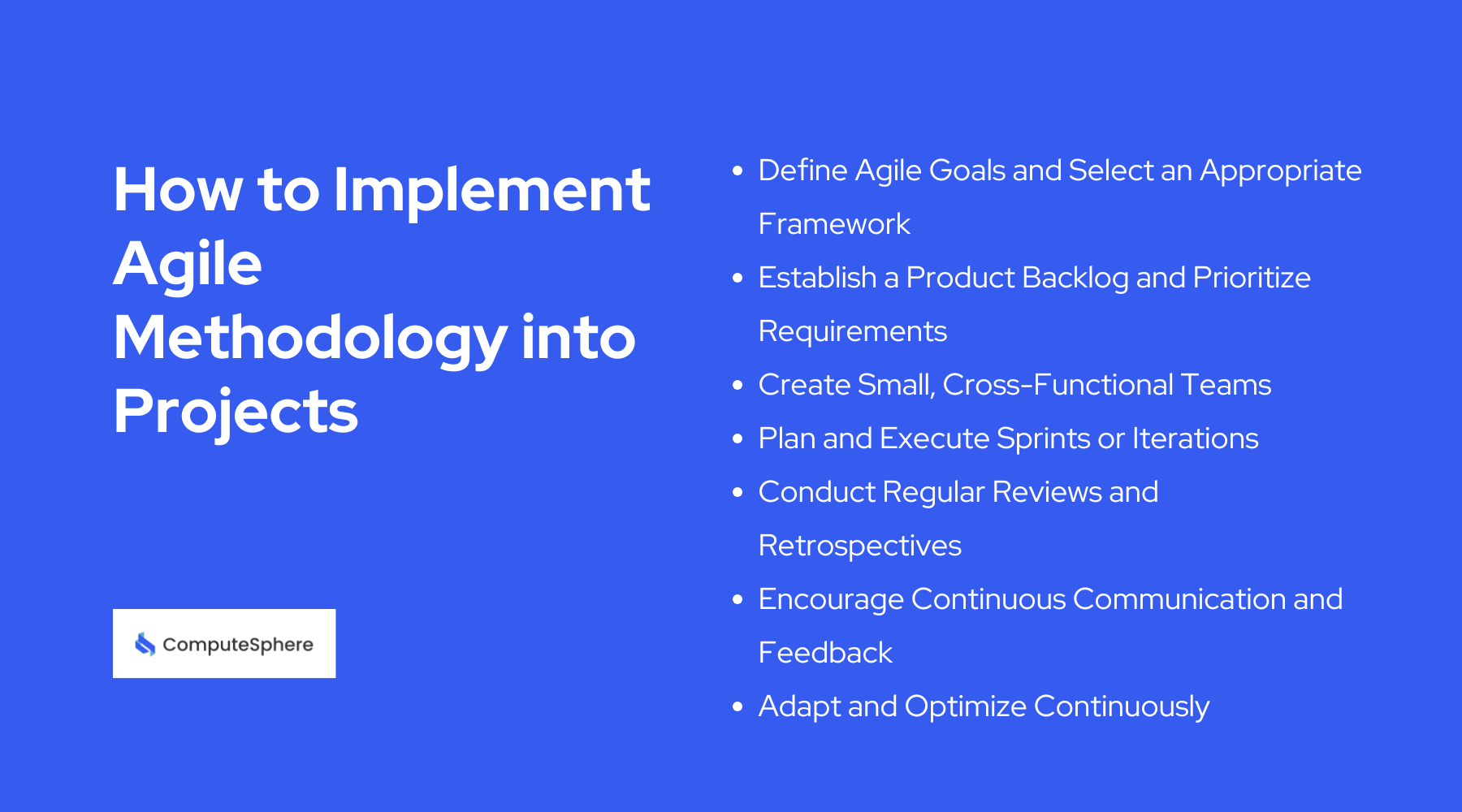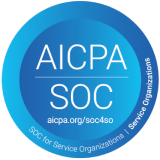What Is Agile Methodology in Project Management?

Agile methodology is a dynamic approach to project management that emphasizes flexibility, collaboration, and customer-centricity. Unlike traditional methods that follow a linear process, Agile focuses on delivering value incrementally through small, manageable chunks of work. This repetitive process allows teams to adjust priorities based on real-time feedback. Agile has since been adopted across various industries for its ability to respond to evolving requirements and optimize team performance.
Whether you're managing a tech project or overseeing a product launch, Agile offers a framework that encourages adaptability, transparency, and high levels of collaboration. If you’re looking to get started with Agile, you’ve come to the right place.
What is Agile Methodology?
Agile Methodology is a step-by-step and incremental approach to project management and product development. It focuses on flexibility, continuous improvement, and rapid delivery. Unlike traditional project management methods, Agile breaks down projects into smaller, manageable chunks called iterations or sprints. This allows teams to adapt quickly to changes and deliver customer value faster.
The methodology emerged in the software development industry in the early 2000s but has since been adopted across various sectors. At its core, Agile emphasizes customer satisfaction, collaborative teamwork, and the ability to respond to change rather than following a rigid plan.
Benefits of Using Agile Methodology
Early, Predictable Delivery
Agile ensures early and predictable delivery by breaking projects into short, focused sprints. This iterative approach allows teams to regularly release functional updates, offering quick progress visibility and minimizing risks. Continuous feedback and collaboration ensure that the product meets evolving customer needs while prioritizing high-value features. Agile's flexibility leads to faster delivery, higher quality, and improved adaptability to change.
Continuous Individual and Collaborative Improvement
Agile fosters a culture of continuous improvement by encouraging regular reflection through retrospectives at the end of each sprint. This focus on improvement helps teams identify areas for enhancement, refine processes, and ultimately improve quality over time, leading to a more efficient and resilient development process. At the same time, Agile emphasizes collaboration among cross-functional teams, including developers, designers, product owners, and stakeholders. Through daily stand-ups, sprint reviews, and retrospectives, Agile promotes open communication, aligns team members on goals, and encourages collective problem-solving, creating a more cohesive and effective team dynamic.
How to Implement Agile Methodology into Projects Management

1. Define Agile Goals and Select an Appropriate Framework
Start by identifying why Agile is the right approach for your project. Define your goals (e.g., faster delivery, improved flexibility, higher customer satisfaction) and choose a framework that best aligns with your needs. For example, use Scrum if your team benefits from time-boxed sprints and regular reviews or Kanban if your workflow involves continuous task updates.
2. Establish a Product Backlog and Prioritize Requirements
Create a product backlog that includes all tasks, features, and requirements. Work with stakeholders to prioritize items based on value, aligning with project goals and customer needs. This prioritized backlog serves as the basis for planning each sprint and ensures that high-priority features are delivered early.
3. Create Small, Cross-Functional Teams
Form teams with diverse skill sets to handle all aspects of development, from coding to testing. Cross-functional teams foster better communication, enabling them to respond quickly to changes and maintain accountability for their tasks. Empower teams to be self-organized, making them more adaptable and efficient.
4. Plan and Execute Sprints or Iterations
Conduct sprint planning sessions to define objectives and establish the workload for each sprint. During execution, hold daily stand-up meetings to keep track of progress, discuss blockers, and maintain alignment. Deliver the completed increment at the end of each sprint, conduct sprint reviews to demonstrate progress, and gather feedback.
5. Conduct Regular Reviews and Retrospectives
At the end of each sprint, hold a review meeting to present completed work and gather stakeholder feedback. Afterward, a retrospective will be run to analyze the sprint’s successes and identify areas for improvement. This reflection allows the team to adjust and refine their practices, ensuring continuous improvement throughout the project.
6. Encourage Continuous Communication and Feedback
Maintain open communication channels with stakeholders, end-users, and team members. Collect feedback regularly to ensure the product stays relevant to user needs and adjusts promptly to changing requirements. Feedback loops enable Agile projects to stay adaptable and customer-focused.
7. Adapt and Optimize Continuously
Use insights from retrospectives to refine processes, introduce new practices, and adjust priorities. Agile thrives on continuous improvement, so encourage your team to experiment with new methods or tools and evolve their approach based on previous outcomes. By fostering a culture of learning and flexibility, your Agile project will become more efficient and successful over time.
Agile in Software Development
Agile in Software Development is a methodology designed to improve the process of software creation by prioritizing collaboration, flexibility, and customer-driven progress. Unlike traditional methods that rely on rigid planning, Agile allows teams to adapt to changing requirements and delivers incremental improvements throughout the project lifecycle.
Moreover, It encourages constant communication among stakeholders and provides a framework for continuous improvement, ensuring that products meet the real needs of users. Here's a unique approach to understanding Agile principles:
- Customer Satisfaction Over Everything: Continuously deliver valuable software, focusing on the end user's needs and ensuring satisfaction throughout the process.
- Embrace Change, Don’t Fear It: Changing requirements are welcomed at any stage, helping products evolve and stay relevant.
- Frequent, Incremental Delivery: Deliver functional increments at regular intervals to provide visible progress and adjust as needed.
- Continuous Collaboration: Ensure close communication between developers and business stakeholders to create a shared vision and respond to changes quickly.
- Simplicity in Execution: Maximize efficiency by focusing on the essential features and eliminating unnecessary work.
Types of Agile Methodologies

1. Scrum
Scrumis one of the most widely adopted Agile frameworks. It divides work into “sprints,” short, time-boxed iterations lasting usually 2–4 weeks. Each sprint involves defined roles such as Scrum Master, Product Owner, and Development Team. Daily stand-ups, sprint reviews, and retrospectives are essential to maintain team alignment and ensure continuous progress toward goals. Scrum is ideal for projects with evolving requirements where frequent feedback and stakeholder involvement are necessary.
2. Kanban
Kanbanemphasizes visualizing the workflow and managing work-in-progress limits to improve process efficiency. Using a Kanban board with columns representing each stage of the workflow (e.g., to-do, in progress, done), teams can quickly see task status, identify bottlenecks, and optimize flow. Kanban is suitable for teams with a continuous delivery model, such as support or maintenance teams.
3. Extreme Programming (XP)
XP focuses on technical excellence and continuous feedback. Practices like pair programming, test-driven development (TDD), and continuous integration help deliver high-quality software while reducing errors. XP is ideal for development environments that prioritize code quality, testing, and close collaboration between developers and stakeholders.
4. Lean
Lean aims to maximize value by reducing waste in the development process. It encourages teams to eliminate any steps that don’t add value and to continuously optimize their workflow. Lean is flexible and suitable for organizations aiming to streamline their processes and reduce time-to-market.
5. Crystal
Crystal is a family of Agile methodologies that vary based on project size and criticality. Crystal Clear, Crystal Yellow, and Crystal Orange are some variations that emphasize team collaboration, communication, and adaptability to the project’s unique needs. Crystal is particularly effective for smaller teams focused on rapid software delivery and high levels of user interaction.
6. Feature-Driven Development (FDD)
FDD revolves around defining, developing, and delivering individual features, making it a structured yet flexible approach. With FDD, development is centered on the completion of features that add tangible value to the end product. It works well for projects with clear requirements and is often used in large teams with complex systems.
Wrap Up
Using Agile methodology in projects helps teams work faster, adapt easily, and keep customers happy. By breaking projects into small parts and gathering regular feedback, teams can quickly make necessary changes.
Different Agile methods, like Scrum, Kanban, or XP, suit different types of projects, allowing flexibility in approach. Agile’s focus on teamwork and frequent updates ensures the final product meets users' needs more accurately. Additionally, adopting Agile makes the development process smoother, more responsive, and aligned with what customers want.
Contents
Built for Builders. Priced for Startups.
Tired of unpredictable cloud bills? ComputeSphere offers modular, fixed-cost cloud hosting that grows with your startup—no DevOps headaches, no surprises.
Get StartedShare this article
Browse Some Related Blogs
Relevant and related contents you can read









